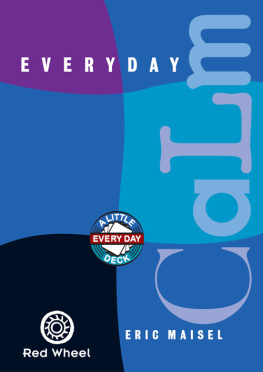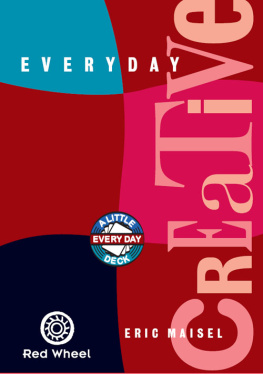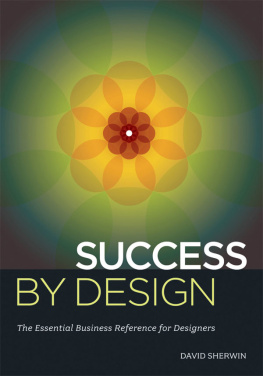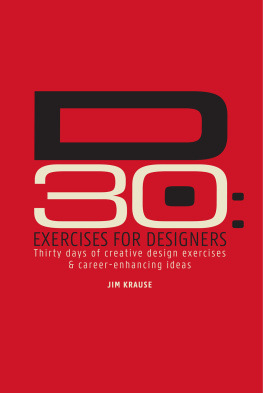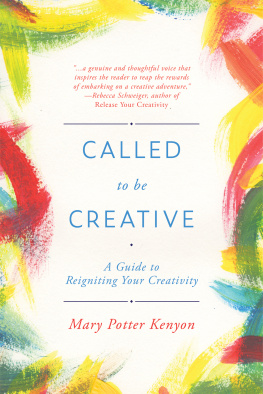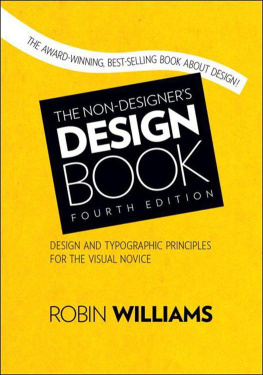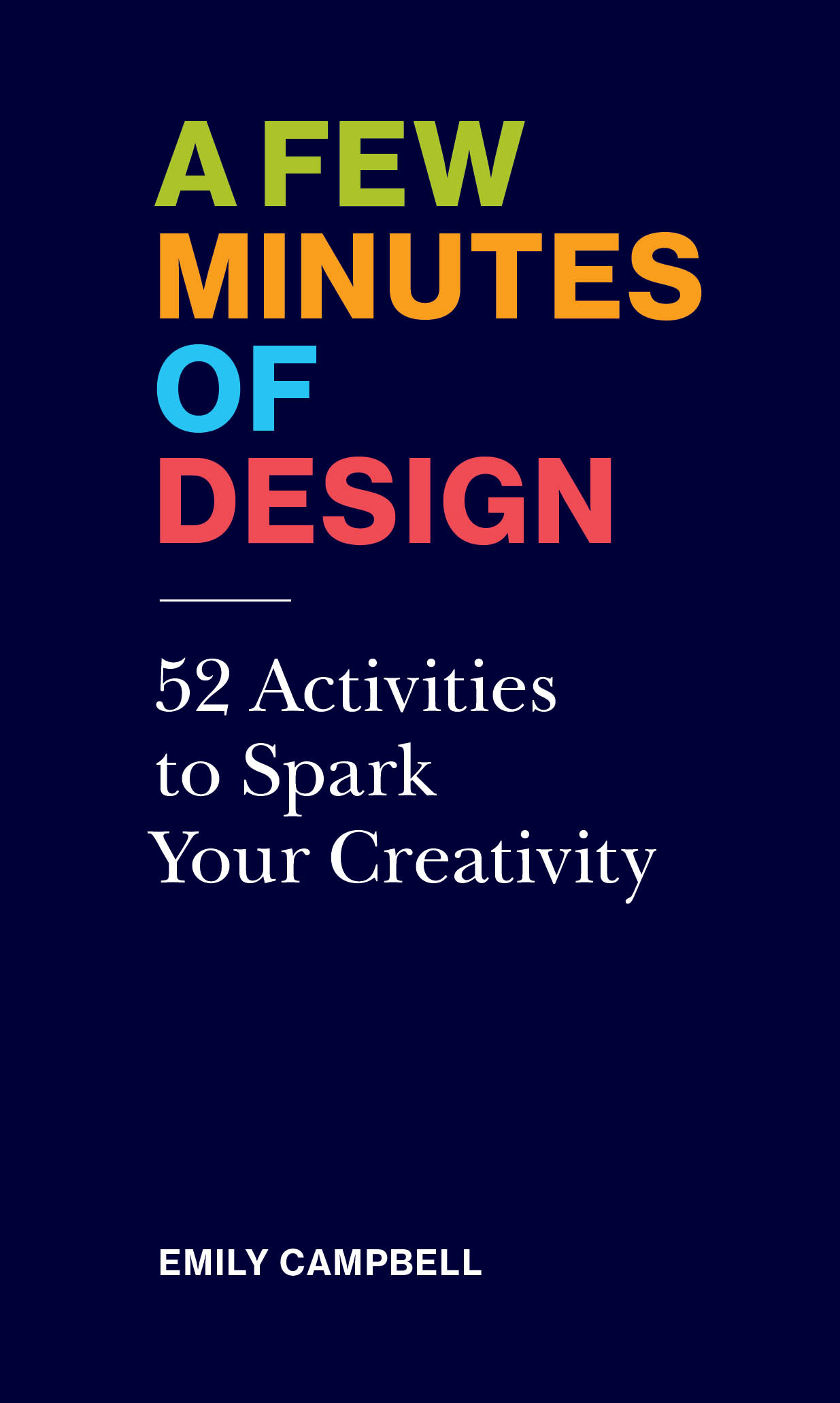

Creative Education Trust is an education charity with a growing number of public primary and secondary schools in England. Designstanding for personal agency, change, and renewalis a central focus of the curriculum in these schools. Emily Campbell, Creative Education Trusts director of programmes, was formerly a graphic designer, a pattern maker in fashion, and design director for many years at the United Kingdoms international agency for cultural relations.
Princeton Architectural Press
202 Warren Street, Hudson, NY 12534
www.papress.com
Creative Education Trust No part of this product may be used or reproduced in any manner without written permission from the publisher, except in the context of reviews.
ISBN 978-1-61689-742-0
ISBN 978-1-61689-770-3 (epub, mobi)
Editor: Kristen Hewitt
Design: vincentdesign.co.uk
Typesetting: Paul Wagner

Contents
A FEW MINUTES OF DESIGN
INTRODUCTION
What comes to mind when you hear the word design? A modernist chair or lamp? Minimalist Japanese fashion? An Apple i-device? Most often we think of manufactured or built objectsfunctional things we need and stylish things we want, small handheld or wearable items, structures we can sit at or sit on, and containers for our stuff. Our thoughts might expand to include the architectural scaleinhabitable structures, the roof over our head, or the metal volumes that enclose us in transit by air, sea, and land.
Large or small, we tend to think of designed things as the finished product. This can make it hard to imagine what its like to design them. But in pursuit of their vision of these finished products, designers are preoccupied by innumerable small decisions. How to join this part to that; how to establish a pattern or continue a series; how to say something without words; how best to terminate a shape or to group or classify elements and illuminate their significance; how to determine what fits or follows the rule, and what doesnt. A Few Minutes of Design is an insight into these preoccupations.
The cards evoke what its like to be a designer through a series of accessible, concise exercises. Some ask you to draw and others to write; some ask you to classify, others to distinguish or explain. Some tasks are singular; others have several variations. All of them ask you to perform a rudimentary act of design by following plain-language instructions. Although the lessons in these exercises may at first seem minor in comparison to the grand vision the killer concept or problem solvedsmall moves and decisions such as these have a powerful influence on the success of any design.
First conceived as a set of exercises for the school classroom, A Few Minutes of Design invites anyoneof any ageto experience the small ways by which our world is made more coherent and intuitive by design.
Take some paper, a pencil, and a few minutes.
Emily Campbell
Director of Programmes, Creative Education Trust
JOINT ENDEAVOR
Explain in a drawing how you would join the objects or materials on the other side of this card. You can cut them and/or multiply them if you need to. Label the drawing with instructions and indicate any extra materials you would need to make the joints sound.
It doesnt have to be a product with a recognizable function; you just have to work out how you could join the parts neatly and securely.

JOINT ENDEAVOR
Explain in a drawing how you would join the objects or materials on the other side of this card. You can cut them and/or multiply them if you need to. Label the drawing with instructions and indicate any extra materials you would need to make the joints sound.
It doesnt have to be a product with a recognizable function; you just have to work out how you could join the parts neatly and securely.

JOINT ENDEAVOR
Explain in a drawing how you would join the objects or materials on the other side of this card. You can cut them and/or multiply them if you need to. Label the drawing with instructions and indicate any extra materials you would need to make the joints sound.
It doesnt have to be a product with a recognizable function; you just have to work out how you could join the parts neatly and securely.

JOINT ENDEAVOR
Explain in a drawing how you would join the objects or materials on the other side of this card. You can cut them and/or multiply them if you need to. Label the drawing with instructions and indicate any extra materials you would need to make the joints sound.
It doesnt have to be a product with a recognizable function; you just have to work out how you could join the parts neatly and securely.

ODD ONE OUT
Decide which object on the other side of this card you think is the odd one out.
Say why.
There are no right or wrong answers, but you need thoughtful reasons based on what you can see in the pictures.

ODD ONE OUT
Decide which object on the other side of this card you think is the odd one out.
Say why.
There are no right or wrong answers, but you need thoughtful reasons based on what you can see in the pictures.

ODD ONE OUT
Decide which object on the other side of this card you think is the odd one out.
Say why.
There are no right or wrong answers, but you need thoughtful reasons based on what you can see in the pictures.

EXTENDED FAMILY
Look at the family of symbols on the other side of this card.
How have the pictures been simplified to make symbols? Are they made of solid shapes or lines? What visual features does each one use? What makes them a family?
Draw your own symbols to continue the series, keeping the same visual language of simplification, line, shape, and style as the original members.
Now draw a symbol that does not belong to the family.



